-
ARTÍCULO ORIGINAL29/07/2022
Cognitive-behavioral program to control lower urinary tract symptoms after radical prostatectomy: a randomized clinical trial
Revista Brasileira de Enfermagem. 2022;75(5):e20210818
Resumen
ARTÍCULO ORIGINALCognitive-behavioral program to control lower urinary tract symptoms after radical prostatectomy: a randomized clinical trial
Revista Brasileira de Enfermagem. 2022;75(5):e20210818
DOI 10.1590/0034-7167-2021-0818
Visualizações0Ver maisABSTRACT
Objective:
to assess the effectiveness of a cognitive-behavioral program to control lower urinary tract symptoms after radical prostatectomy.
Methods:
a randomized clinical trial study, with 41 participants randomized into intervention (n=20) and control (n=21), for three months. The intervention group received the cognitive-behavioral program, while the control group received routine guidance from the service. Outcome variables were urinary incontinence intensity and lower urinary tract symptoms, assessed by the Pad-Test and Urinary Incontinence Scale of Radical Prostatectomy and King’s Health Questionnaire.
Results:
at the end of the study, the intervention group had a lower urinary incontinence intensity (p≤0.001), and there were less chances of presenting changes in urinary frequency (p≤0.001), urinary urgency (p≤0.001), nocturia (p=0.005), stress urinary incontinence (p≤0.001) and urge incontinence (p≤0.045).
Conclusion:
the cognitive-behavioral program was effective in reducing lower urinary tract symptoms after radical prostatectomy. Brazilian Clinical Trial Registry: RBR-3sstqg.
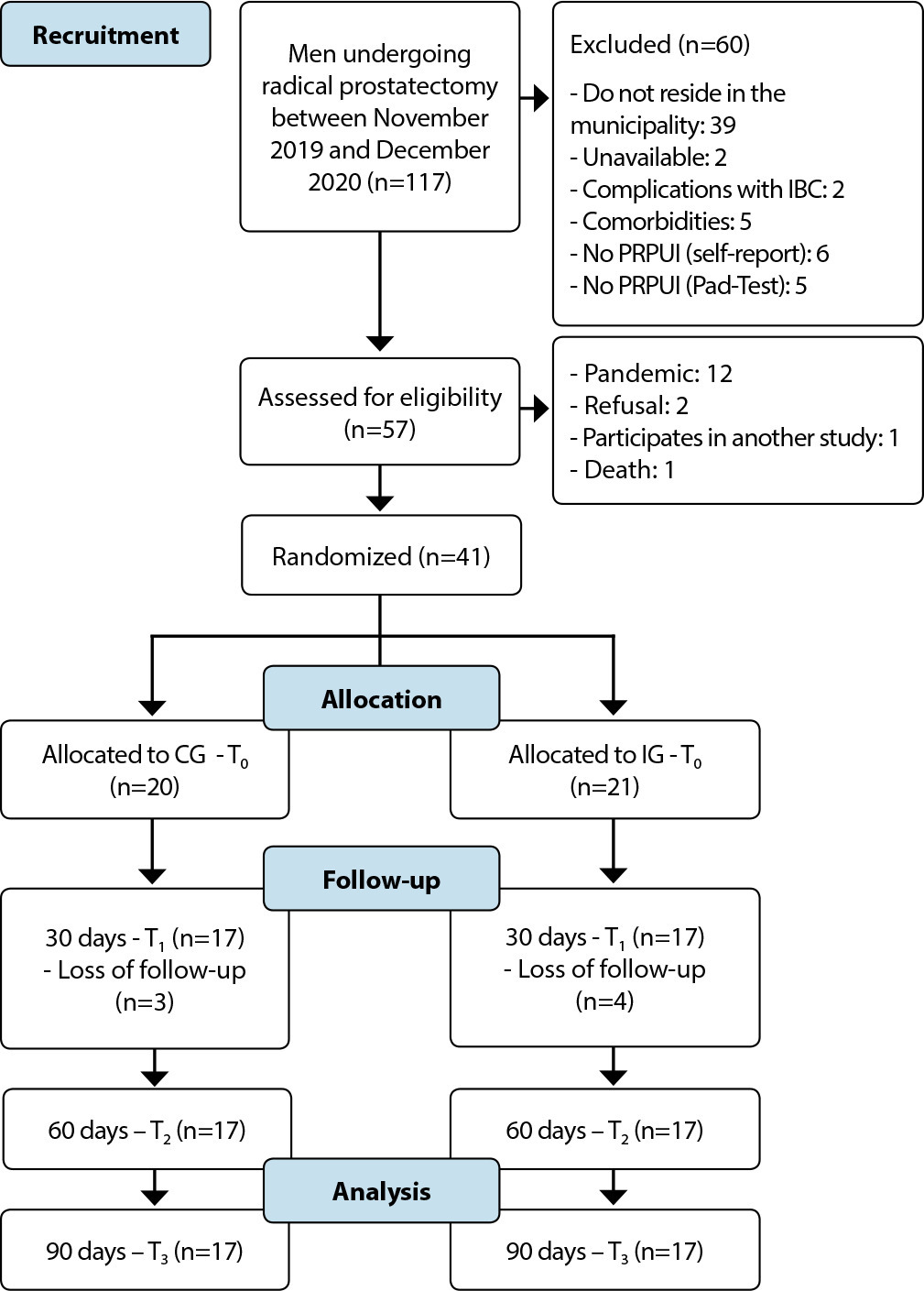
-
ARTÍCULO ORIGINAL22/07/2022
Lilalva Scale: soft-hard technology to measure clinical competencies in emergencies of nurses
Revista Brasileira de Enfermagem. 2022;75(5):e20210950
Resumen
ARTÍCULO ORIGINALLilalva Scale: soft-hard technology to measure clinical competencies in emergencies of nurses
Revista Brasileira de Enfermagem. 2022;75(5):e20210950
DOI 10.1590/0034-7167-2021-0950
Visualizações0Ver maisABSTRACT
Objectives:
to present the visual identity of a soft-hard technology; to describe its technical characteristics, standardization and norms of criteria for the interpretation of results, in order to measure clinical competencies in emergencies of nurses.
Methods:
article developed as a methodological study for the creation of the graphic image of the scale and standardization based on previous studies of validity and reliability evidence.
Results:
the designed technology was named “Lilalva Scale for Measuring Clinical Competencies in Emergencies of Nurses”. The graphic image text is organized by title, instructions on how to fill it out, description of the quality of delivery, and behavioral actions with respective degrees of response. The Scale has 22 items with characterization data. The standardization of the measurement instrument included: instructions for use, calculation protocol, and hypothetical example to calculate scores, the sum of the resulting scores metric for each clinical competence and diagnostic classification.
Conclusions:
the visual identity and the standardization instrumentalize the use of the Scale for those interested in the theme.

-
ARTÍCULO ORIGINAL22/07/2022
Educational technology to promote father involvement in childbirth and birth
Revista Brasileira de Enfermagem. 2022;75(5):e20210243
Resumen
ARTÍCULO ORIGINALEducational technology to promote father involvement in childbirth and birth
Revista Brasileira de Enfermagem. 2022;75(5):e20210243
DOI 10.1590/0034-7167-2021-0243
Visualizações0Ver maisABSTRACT
Objectives:
to build and validate an educational booklet to promote the involvement of parents in labor and birth.
Methods:
methodological study developed in five stages: situational diagnosis; bibliographic survey; construction of illustrations, layout, design and texts; content and appearance validation by judges (25 experts) and calculation of the Flesch Readability Index; and validation with the target audience (12 parents). A minimum Content Validity Index of 0.80 was considered.
Results:
the booklet was entitled “Father Presence” and was developed in 11 topics. In Content and Appearance Validation, the Validity Index obtained an overall score of 0.97. Cronbach’s alpha was 0.92, indicating excellent reliability of its content. A global score of 74% for readability was obtained, considered easy to understand.
Conclusions:
the material was successful in the validation process, and it can be recommended for parents to use it during the prenatal period, promoting the inclusion of the partner and preparing them for labor and birth.
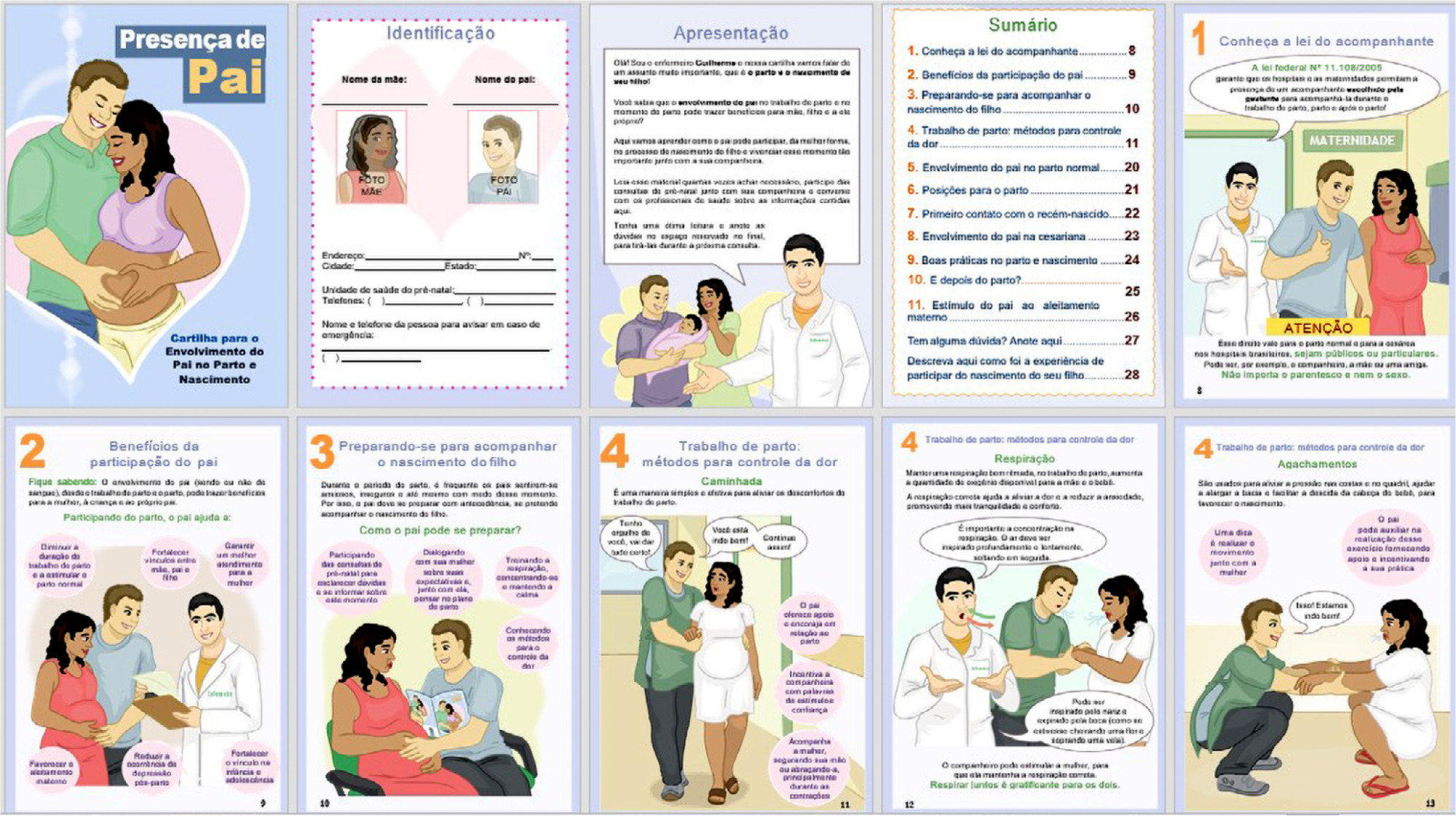
-
ARTÍCULO ORIGINAL22/07/2022
Implementation of advanced practice nursing in Brazilian Primary Health Care: methodological path
Revista Brasileira de Enfermagem. 2022;75(5):e20210614
Resumen
ARTÍCULO ORIGINALImplementation of advanced practice nursing in Brazilian Primary Health Care: methodological path
Revista Brasileira de Enfermagem. 2022;75(5):e20210614
DOI 10.1590/0034-7167-2021-0614
Visualizações0Ver maisABSTRACT
Objectives:
to describe the operationalization of the steps of a model proposed by the Pan American Health Organization for implementing advanced practice nursing in Primary Health Care services.
Methods:
a methodological study, with a qualitative approach, carried out in a local health system located in southern São Paulo. The first six steps of the model were followed: 1) improve health outcomes; 2) identify stakeholders; 3) determine unmet health needs; 4) identify priorities and goals to introduce advanced nursing practices in primary health care; 5) define advanced practice nursing in primary health care; 6) plan implementation strategies.
Results:
in each step, the objectives, methodological strategies and operationalization were described.
Final Considerations:
the model proved to be effective to support the process of development and implementation of advanced practice nursing in the local system studied.
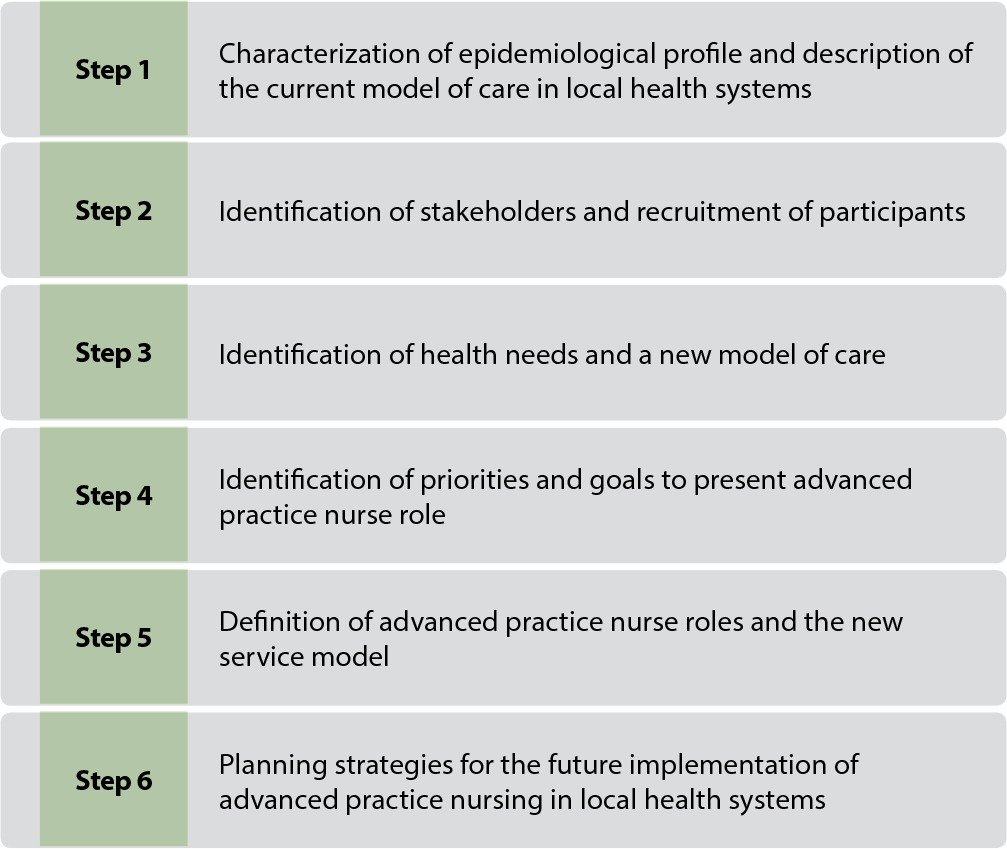
-
ARTÍCULO ORIGINAL22/07/2022
Effects of carbohydrate use on preoperative thirst: a randomized clinical trial
Revista Brasileira de Enfermagem. 2022;75(5):e20210355
Resumen
ARTÍCULO ORIGINALEffects of carbohydrate use on preoperative thirst: a randomized clinical trial
Revista Brasileira de Enfermagem. 2022;75(5):e20210355
DOI 10.1590/0034-7167-2021-0355
Visualizações0Ver maisABSTRACT
Objectives:
to evaluate the effectiveness of carbohydrate popsicles, carbohydrate solution, and usual care (fasting) on the intensity and discomfort of preoperative thirst.
Methods:
a randomized clinical trial with 60 preoperative patients aged between 18 and 60 years, randomized into three groups: control (fasting), carbohydrate solution (100 ml), and carbohydrate popsicle (100 ml). The outcomes were thirst intensity and discomfort.
Results:
there was a difference between groups for final thirst intensity (p = 0.01) and final thirst discomfort (p = 0.001). The effect size for both the Solution Group and the Popsicle Group was robust: 0.99 and 1.14, respectively.
Conclusions:
the groups that received the carbohydrate fasting abbreviation showed a reduction in thirst discomfort compared to the control group. The carbohydrate popsicle proved more effective in reducing the intensity of thirst. NCT: 3.209.283
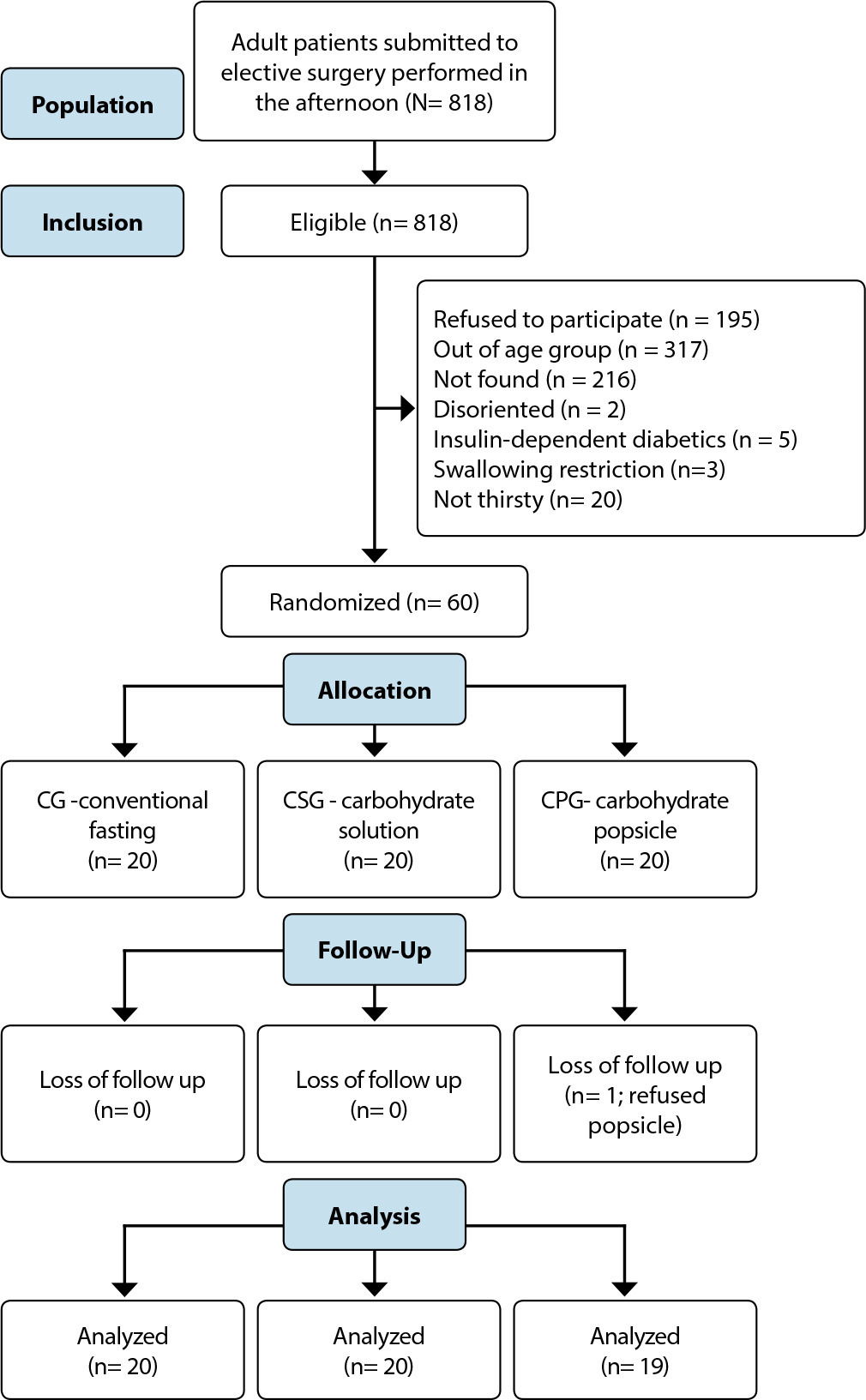
-
ARTÍCULO ORIGINAL22/07/2022
Cross-cultural adaptation, validation and reliability of the Medication Safety Thermometer tool for use in Brazil
Revista Brasileira de Enfermagem. 2022;75(5):e20210839
Resumen
ARTÍCULO ORIGINALCross-cultural adaptation, validation and reliability of the Medication Safety Thermometer tool for use in Brazil
Revista Brasileira de Enfermagem. 2022;75(5):e20210839
DOI 10.1590/0034-7167-2021-0839
Visualizações0Ver maisABSTRACT
Objectives:
to perform cross-cultural adaptation, face and content validation and reliability analysis of the Medication Safety Thermometer tool for use in Brazil.
Methods:
the process of cross-cultural adaptation and validation followed the stages of translation, synthesis of translations, back-translation, content validation performed by experts, and face validation through pre-testing. Reliability was determined by calculating the Kappa coefficient.
Results:
the two translated versions were synthesized into a single version, which was back-translated and showed no divergences. The expert committee judged the adapted tool as equivalent, reaching a Content Validity Index higher than 0.8. The mean global understanding was 1.82, demonstrating face validity. The assessed items had Kappa coefficient greater than 0.61, showing agreement between observers.
Conclusions:
the cross-cultural adaptation of the tool was performed following an established methodology. The adapted tool showed inter-rater reliability and validity for use in Brazil.
-
ARTÍCULO ORIGINAL18/07/2022
Legal abortion in childhood: the official discourse and the reality of a Brazilian case
Revista Brasileira de Enfermagem. 2022;75(6):e20210946
Resumen
ARTÍCULO ORIGINALLegal abortion in childhood: the official discourse and the reality of a Brazilian case
Revista Brasileira de Enfermagem. 2022;75(6):e20210946
DOI 10.1590/0034-7167-2021-0946
Visualizações0Ver maisABSTRACT
Objective:
to identify the ideological perspectives of official discourses in relation to sexual violence, childhood pregnancy and access to legal abortion based on a Brazilian case.
Methods:
a qualitative documentary study. Data collection was carried out in documents published on official Brazilian websites, between August and December 2020. The analytical categories of gender and generation supported data analysis.
Results:
a total of 39 documents were selected and three empirical categories were identified: Protection against violence in the legislation and the (re)production of injuries in reality; Facing sexual violence against children by the Brazilian State; Being a Brazilian girl: gender and generational oppressions.
Final considerations:
the ideological perspectives of official discourses in relation to the case showed a lack of compliance with advances in Brazilian legislation on issues related to child violence and adult-centric authoritarianism, with the imposition of gender and generation subalternity.
-
18/07/2022
Factores asociados al uso del respirador N95 en universitarios en lo cotidiano de la COVID-19
Revista Brasileira de Enfermagem. 2022;75(6):e20210412
Resumen
Factores asociados al uso del respirador N95 en universitarios en lo cotidiano de la COVID-19
Revista Brasileira de Enfermagem. 2022;75(6):e20210412
DOI 10.1590/0034-7167-2021-0412es
Visualizações0Ver maisRESUMEN
Objetivo:
Identificar los factores asociados al uso del respirador N95 en estudiantes de Enfermería y Medicina Humana en lo cotidiano de la pandemia COVID-19.
Métodos:
Estudio descriptivo-analítico transversal realizado en el año 2020. Participaron 830 estudiantes de tres universidades de Perú. Se evaluaron asociaciones mediante Chi Cuadrado de Pearson y modelamiento multivariado de Poisson con link log.
Resultados:
Se encontró diferencias estadísticamente significativas entre la preferencia de usar el respirador N95 en comparación con las mascarillas según la actividad que desempeñan (p=0,001) y lugar de residencia (p=0,005). El análisis multivariado reportó que las características asociadas fueron la edad, la actividad que desempeña, percepción y miedo de que podrían infectarse con COVID-19.
Conclusión:
En la preferencia de elegir el respirador N95, intervienen factores individuales y las percepciones. Se necesitan espacios para discutir lo cotidiano, la manera de vivir, cuidar y educar; considerando dimensiones socioeconómicas y creencias.
-
ARTÍCULO ORIGINAL13/12/2019
Uso de tecnologia móvel para o cuidado gestacional: avaliação do aplicativo GestAção
Revista Brasileira de Enfermagem. 2019;72:266-273
Resumen
ARTÍCULO ORIGINALUso de tecnologia móvel para o cuidado gestacional: avaliação do aplicativo GestAção
Revista Brasileira de Enfermagem. 2019;72:266-273
DOI 10.1590/0034-7167-2018-0641
Visualizações0RESUMO
Objetivo:
avaliar o aplicativo GestAção, com base na experiência de uso das gestantes.
Método:
estudo de natureza avaliativa, aplicada, metodológica, com abordagem quanti-qualitativa. A ferramenta tecnológica foi avaliada por 13 gestantes por meio de questionários para a caracterização do perfil sociodemográfico e o uso da escala de Likert, para calcular o Índice de Validade de Conteúdo (IVC) do aplicativo; e entrevista semiestruturada, com análise fundamentada na Semiótica.
Resultados:
o estudo evidenciou significativo nível de satisfação das gestantes com o uso do aplicativo, considerando os objetivos (IVC= 0,92), estrutura e apresentação (IVC= 0,86), e relevância (IVC= 0,92).
Considerações finais:
o aplicativo GestAção obteve IVC geral de 0,90, evidenciando-o como tecnologia facilitadora e coadjuvante no empoderamento das gestantes interessadas em obter conhecimentos sobre o período gravídico, mostrando-se uma potente ferramenta para qualificar as boas práticas na consulta de enfermagem.
Palavras-chave: Aplicativos MóveisCuidados de EnfermagemGestaçãoPromoção da SaúdeTecnologia em SaúdeVer mais -
ARTÍCULO ORIGINAL17/02/2020
Estresse ocupacional em profissionais de enfermagem de um hospital universitário
Revista Brasileira de Enfermagem. 2020;73(2):e20180997
Resumen
ARTÍCULO ORIGINALEstresse ocupacional em profissionais de enfermagem de um hospital universitário
Revista Brasileira de Enfermagem. 2020;73(2):e20180997
DOI 10.1590/0034-7167-2018-0997
Visualizações0RESUMO
Objetivos:
Identificar a presença de estresse ocupacional nos profissionais de enfermagem de um hospital universitário do interior de Minas Gerais e analisar a influência das características sociodemográficas e ocupacionais neste agravo.
Métodos:
Estudo transversal, exploratório e quantitativo, realizado com 124 profissionais de enfermagem de um hospital universitário do interior de Minas Gerais. Para sua efetivação, foi utilizada a versão adaptada e validada para o português da escala Job Stress Scale (JSS).
Resultados:
A maioria dos profissionais era mulheres (87,9 %), com média de idade de 40,2 anos, 80,6 % eram técnicos de enfermagem e 71,8% da amostra apresentava algum grau de exposição ao estresse ocupacional.
Conclusões:
O índice de estresse ocupacional foi superior ao observado em estudos anteriores. Os dados obtidos no estudo apontam para a necessidade de implementar medidas institucionais de prevenção ao estresse ocupacional, sobretudo fortalecendo o apoio social no trabalho.
Palavras-chave: Equipe de EnfermagemEstresse OcupacionalHospital UniversitárioProfissionais de EnfermagemSaúde do TrabalhadorVer mais -
REFLEXIÓN01/07/2020
Como traduzir o conhecimento científico à prática? Conceitos, modelos e aplicação
Revista Brasileira de Enfermagem. 2020;73(5):e20190179
Resumen
REFLEXIÓNComo traduzir o conhecimento científico à prática? Conceitos, modelos e aplicação
Revista Brasileira de Enfermagem. 2020;73(5):e20190179
DOI 10.1590/0034-7167-2019-0179
Visualizações0RESUMO
Objetivos:
apresentar o conceito de Tradução e Intercâmbio do Conhecimento tal como vem sendo utilizado na literatura internacional e, em particular, no Canadá. A seguir, descrever um renomado modelo conceitual para orientar a sua implementação, intitulado Ciclo do Conhecimento à Ação.
Resultados:
ilustramos a utilização do modelo no contexto do sistema municipal de atenção básica à saúde no sul do Brasil, na implementação de estratégias de manejo da dor durante a vacinação.
Conclusões:
nesta reflexão teórica, argumentamos sobre a importância de se traduzir o conhecimento científico aos diversos contextos de prática e criar oportunidades de intercâmbio com os usuários desse saber, como profissionais de saúde, gestores, formuladores de políticas públicas, pacientes, familiares e demais grupos de interesse, para promover equidade e qualidade dos cuidados no Sistema Único de Saúde.
Palavras-chave: Competência ClínicaDifusãoDisseminação de InformaçãoTradução do ConhecimentoTranslaçãoVer mais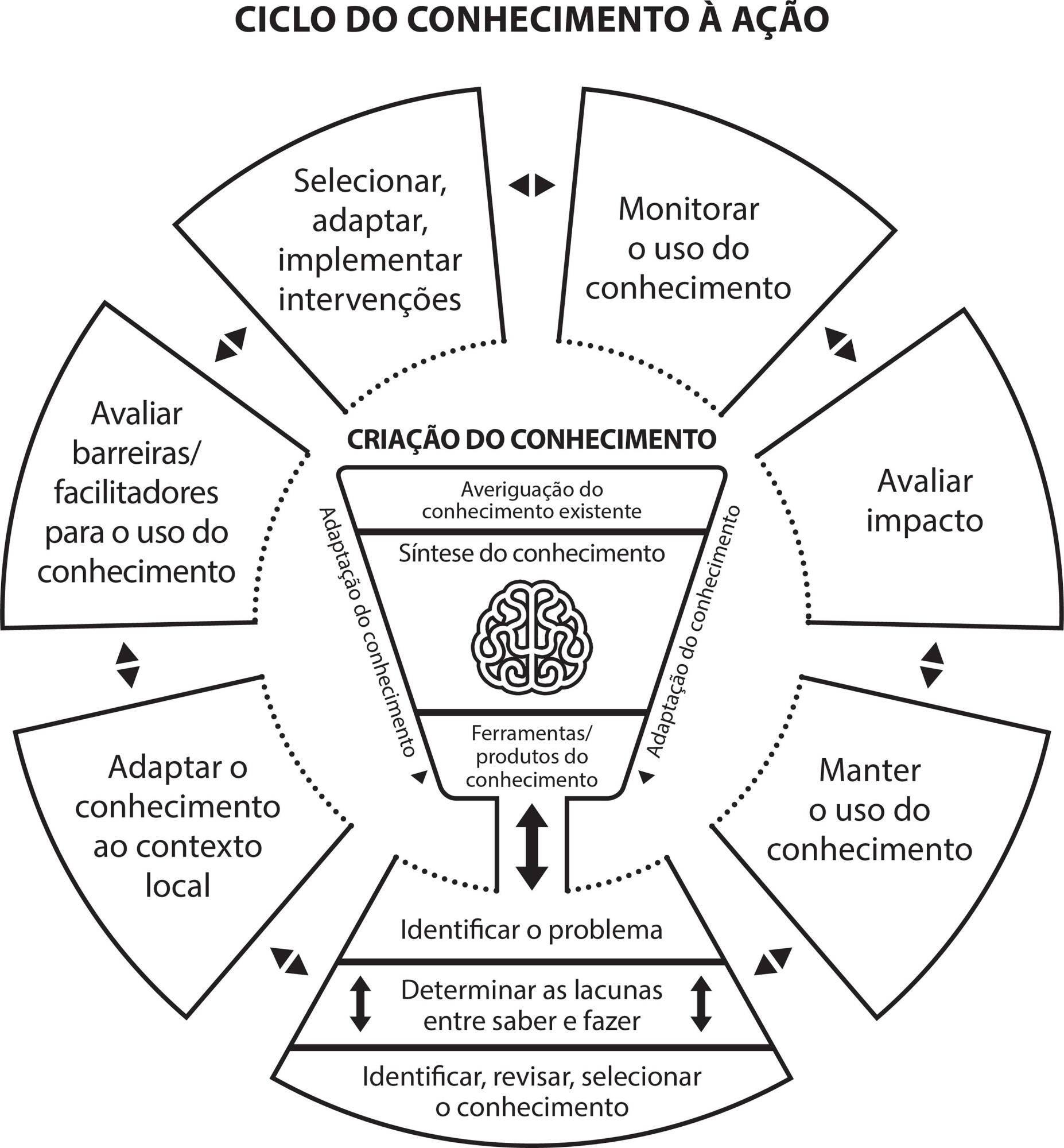
-
REFLEXIÓN05/03/2021
Trabalho do enfermeiro no contexto da pandemia de COVID-19
Revista Brasileira de Enfermagem. 2021;74:e20200594
Resumen
REFLEXIÓNTrabalho do enfermeiro no contexto da pandemia de COVID-19
Revista Brasileira de Enfermagem. 2021;74:e20200594
DOI 10.1590/0034-7167-2020-0594
Visualizações0Ver maisRESUMO
Objetivo:
Refletir sobre o trabalho experienciado pelo enfermeiro no enfrentamento da pandemia de COVID-19 vivenciado em um hospital público do estado do Rio Grande do Norte.
Métodos:
Ensaio reflexivo embasado na vivência profissional em um hospital público de referência para atendimento de pacientes acometidos pela COVID-19 no estado do Rio Grande do Norte. Os resultados foram organizados em duas categorias empíricas, que destacam as potencialidades e entraves do trabalho do enfermeiro diante da COVID-19, apresentados por meio do diagrama de Ishikawa.
Resultados:
Duas categorias emergiram das experiências vivenciadas: Protagonismo da enfermagem na organização dos serviços de saúde para o enfrentamento da COVID-19; e O exercício da gerência dos cuidados de enfermagem na pandemia de COVID-19.
Considerações finais:
Necessita-se valorizar o trabalho do enfermeiro em todos os seus atributos, bem como fortalecer os processos de trabalho interdisciplinares, que colaboram para a superação da crise ocasionada pela pandemia.
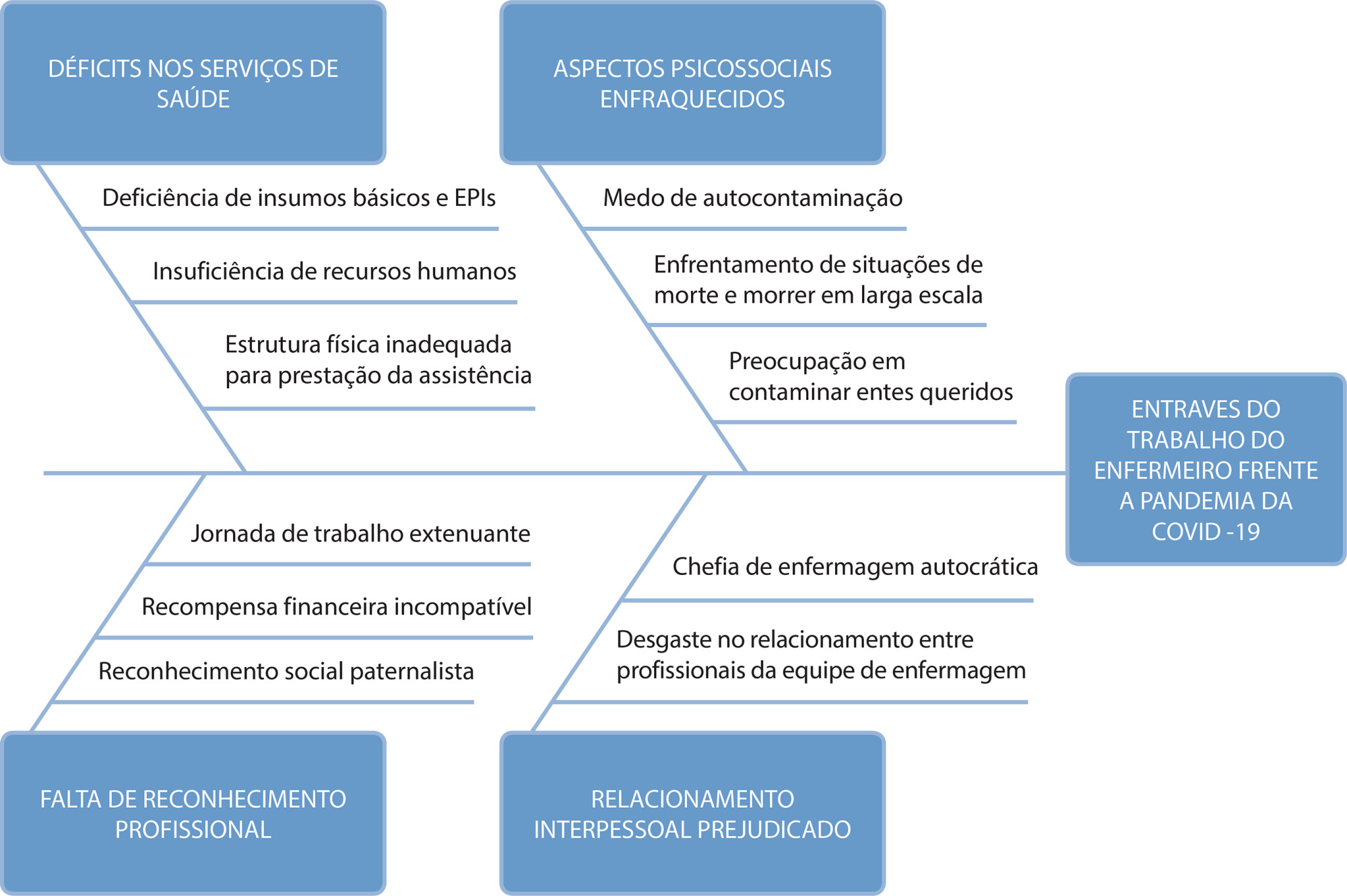
-
ARTÍCULO ORIGINAL08/07/2020
Construção e validação de protocolo assistencial de enfermagem com intervenções educativas para cuidadores familiares de idosos após Acidente Vascular Cerebral
Revista Brasileira de Enfermagem. 2020;73:e20180894
Resumen
ARTÍCULO ORIGINALConstrução e validação de protocolo assistencial de enfermagem com intervenções educativas para cuidadores familiares de idosos após Acidente Vascular Cerebral
Revista Brasileira de Enfermagem. 2020;73:e20180894
DOI 10.1590/0034-7167-2018-0894
Visualizações0Ver maisRESUMO
Objetivo:
construir e validar o conteúdo de um protocolo assistencial de enfermagem com intervenções educativas para cuidadores familiares de idosos após Acidente Vascular Cerebral.
Métodos:
estudo metodológico conduzido em três etapas: (1) construção do protocolo por meio de revisão da literatura; (2) pré-teste com equipe multiprofissional, analisado com articulação da literatura; (3) validação do protocolo pela Técnica Delphi.
Resultados:
o protocolo foi estruturado nos domínios: Orientações Sobre a Doença; Suporte Emocional; Utilização da Rede de Atenção à Saúde; Alimentação; Vias Aéreas; Medicações; Higiene; Cuidados com a Pele; Eliminações; Vestir/Despir; Posicionamento e Transferência; Prevenção de Quedas. No pré-teste, oito especialistas avaliaram a clareza e o conteúdo do protocolo. Na validação, houveram duas rodadas pela Técnica Delphi. O protocolo validado foi composto por 12 domínios contendo 42 itens e 240 orientações de cuidados.
Conclusão:
o protocolo qualifica a transição do cuidado após alta hospitalar auxiliando os enfermeiros na prática assistencial no domicílio.
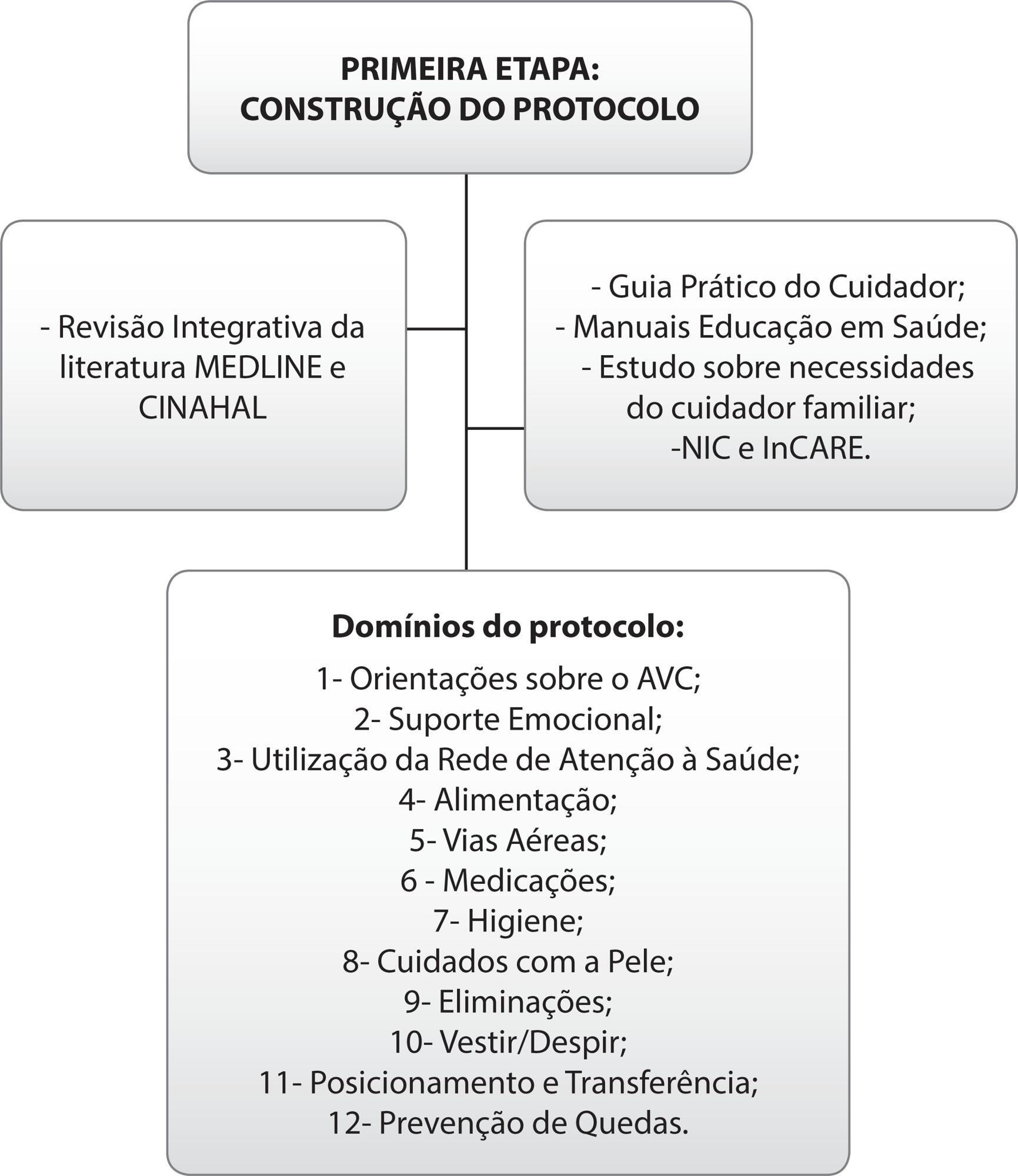
-
ARTÍCULO DE REVISIÓN22/04/2020
Polycyclic aromatic hydrocarbons and development of respiratory and cardiovascular diseases in workers
Revista Brasileira de Enfermagem. 2020;73(3):e20180965
Resumen
ARTÍCULO DE REVISIÓNPolycyclic aromatic hydrocarbons and development of respiratory and cardiovascular diseases in workers
Revista Brasileira de Enfermagem. 2020;73(3):e20180965
DOI 10.1590/0034-7167-2018-0965
Visualizações0Ver maisABSTRACT
Objectives:
to identify the scientific evidence on the development of cardiovascular and respiratory diseases due to workplace contamination by polycyclic aromatic hydrocarbons.
Methods:
integrative literature review. The search for primary articles was held in October 2017 in the Medical Literature Analysis and Retrieval System Online (through Pubmed), Web of Science and Latin American and Caribbean Literature in Health Sciences (LILACS).
Results:
the 16 studies analyzed showed that exposure to polycyclic aromatic hydrocarbons was associated with cardiovascular diseases, such as increased blood pressure, heart rate variation, and ischemic heart disease; and respiratory disorders, such as decreased lung function, chronic obstructive pulmonary disease, asthma, wheeze, coughing, pulmonary wheezing, chest tightness, effort dyspnea, and sore throat.
Conclusions:
polycyclic aromatic hydrocarbons cause deleterious effects on the cardiovascular and respiratory systems through mutations and cellular inflammation, being a risk to exposed individuals.
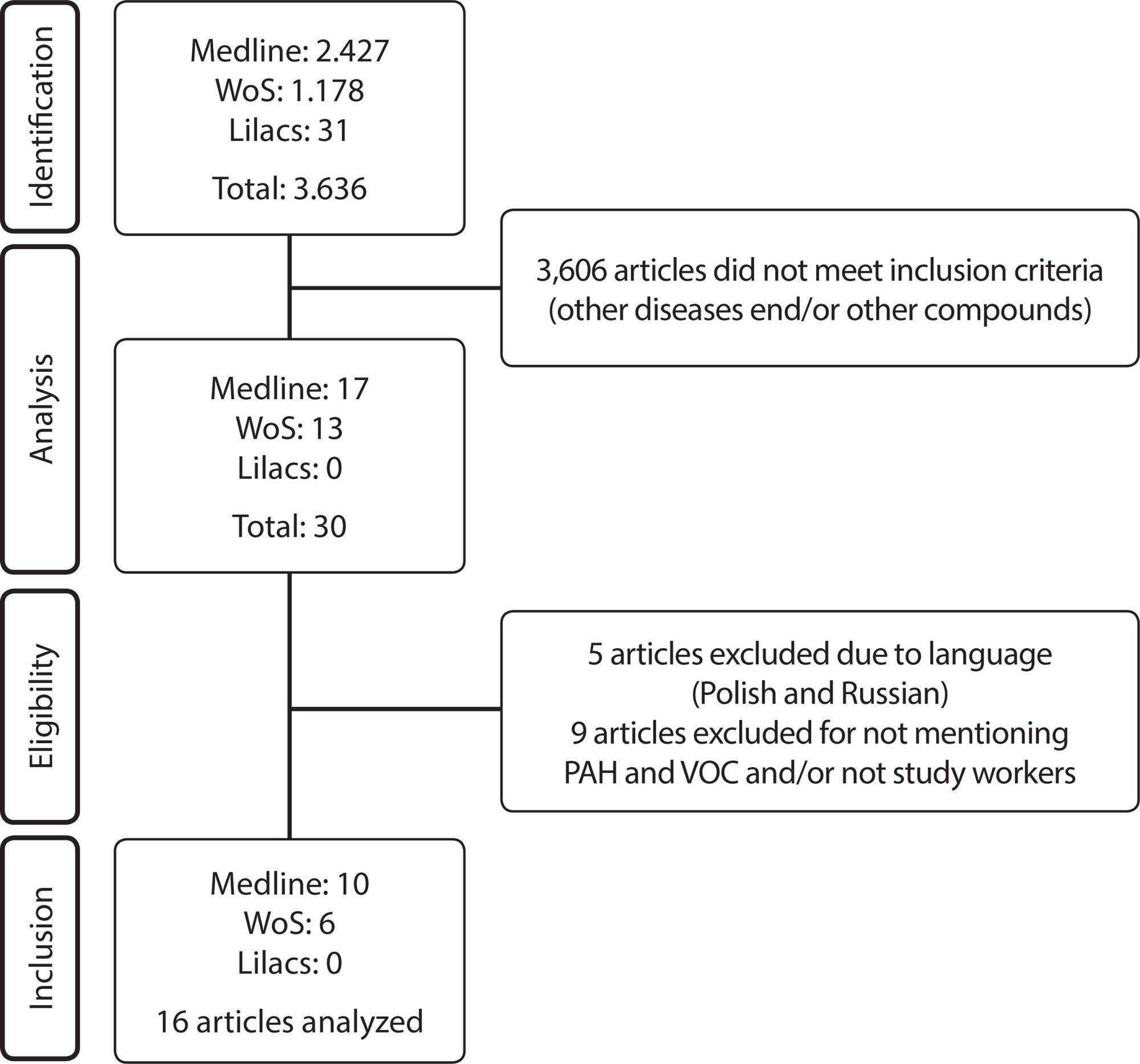
-
ARTÍCULO ORIGINAL23/10/2020
Building and validating an educational video for elderly individuals about fall risks
Revista Brasileira de Enfermagem. 2020;73:e20200010
Resumen
ARTÍCULO ORIGINALBuilding and validating an educational video for elderly individuals about fall risks
Revista Brasileira de Enfermagem. 2020;73:e20200010
DOI 10.1590/0034-7167-2020-0010
Visualizações0Ver maisABSTRACT
Objective:
to build and validate educational video for elderly individuals about fall risks.
Methods:
methodological study with video building. validated by 22 judges and assessed by 22 elderly individuals. Content was selected from the Fall Prevention Model and items from the Falls Risk Awareness Questionnaire. Items with an agreement greater than 0.80 were considered valid. verified through Content Validation Index (CVI) and binomial test.
Results:
building the video was guided by the Cognitive Theory of Multimedia Learning. Digital animation and audio narration were used. It lasted ten minutes and five seconds and included biological. socioeconomic. behavioral and environmental risks as well as precautions to avoid them. The CVI of judges had an average of 0.99. and of elderly individuals. an average of 1.0.
Conclusion:
the video was built and validated for content and understanding and can be used to prevent falls in elderly individuals.
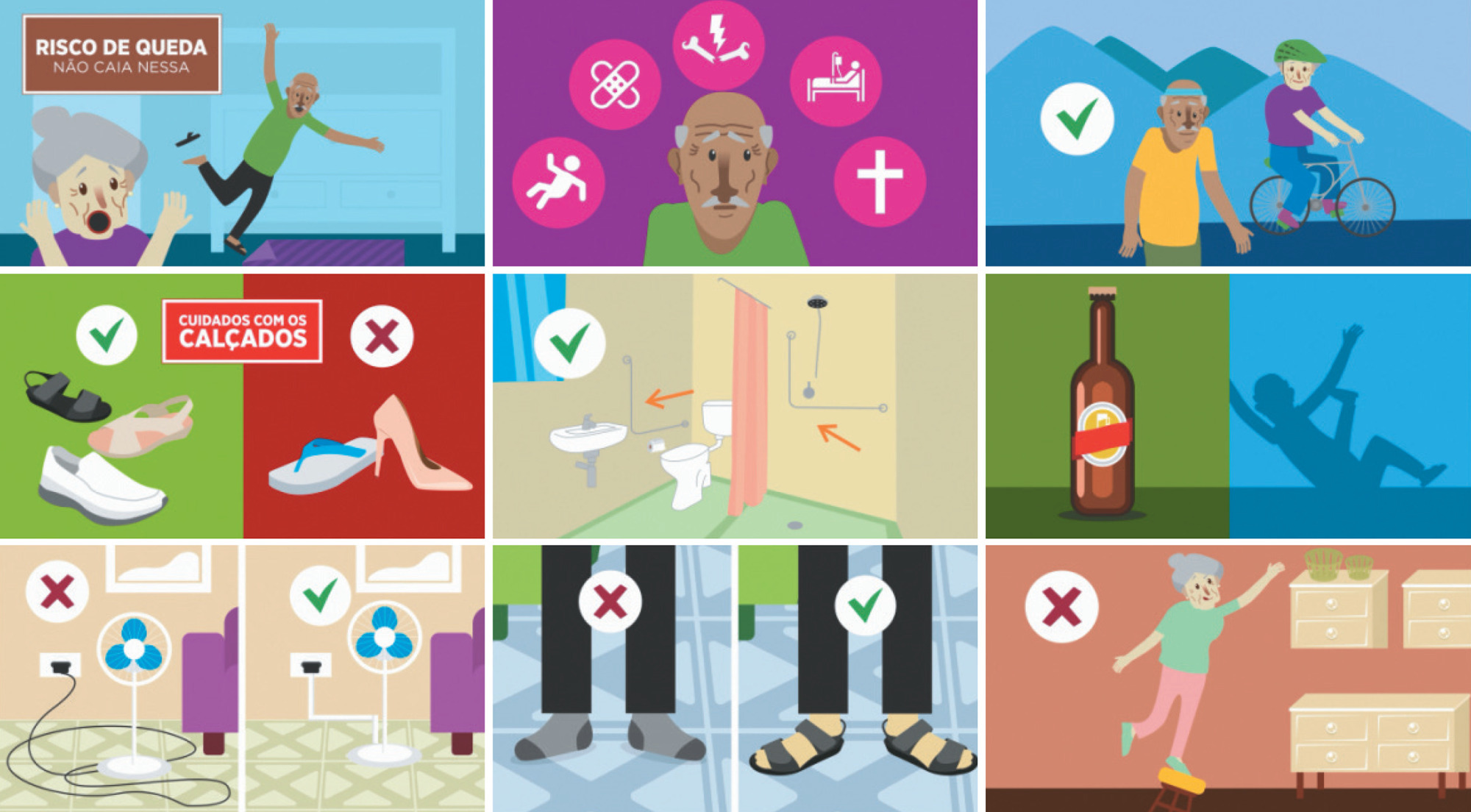
Búsqueda
Buscar en:
Nuvem de Tags
Adolescente (85) Atenção Primária à Saúde (239) COVID-19 (91) Criança (91) Cuidados de Enfermagem (269) Educação em Enfermagem (151) Educação em Saúde (139) Enfermagem (930) Enfermagem Pediátrica (86) Estudantes de Enfermagem (77) Estudos de Validação (131) Família (87) Idoso (208) Promoção da Saúde (99) Qualidade de Vida (104) Saúde do Trabalhador (86) Saúde Mental (145) Saúde Pública (82) Segurança do Paciente (150) Tecnologia Educacional (100)



